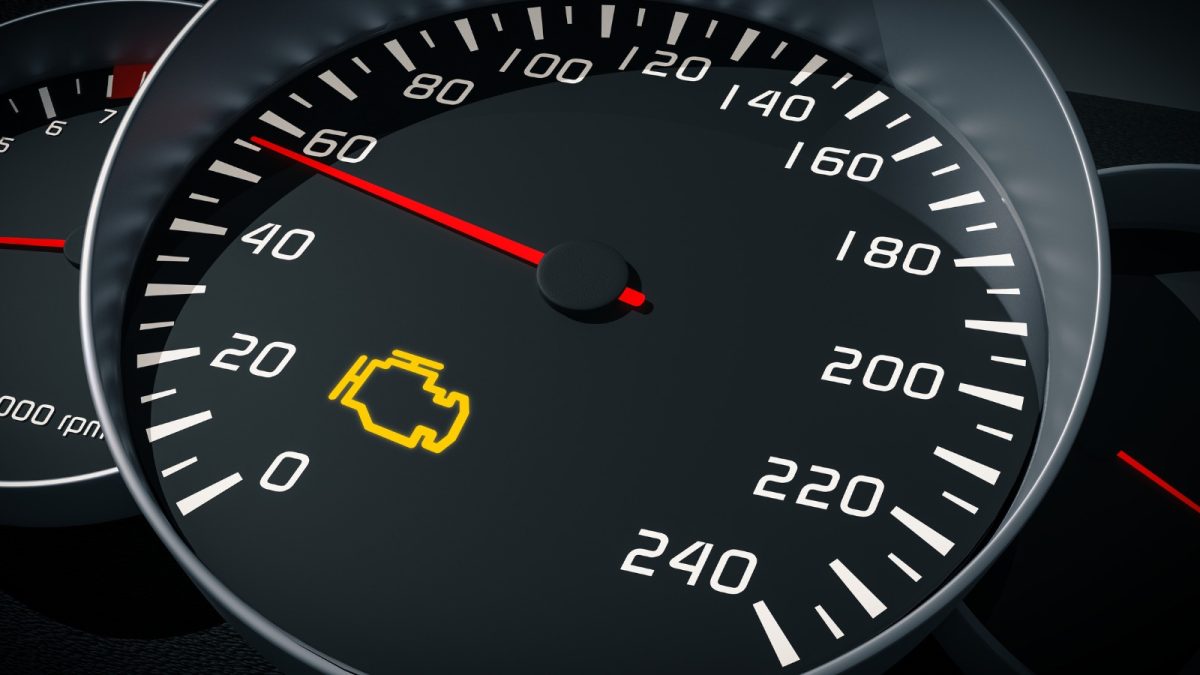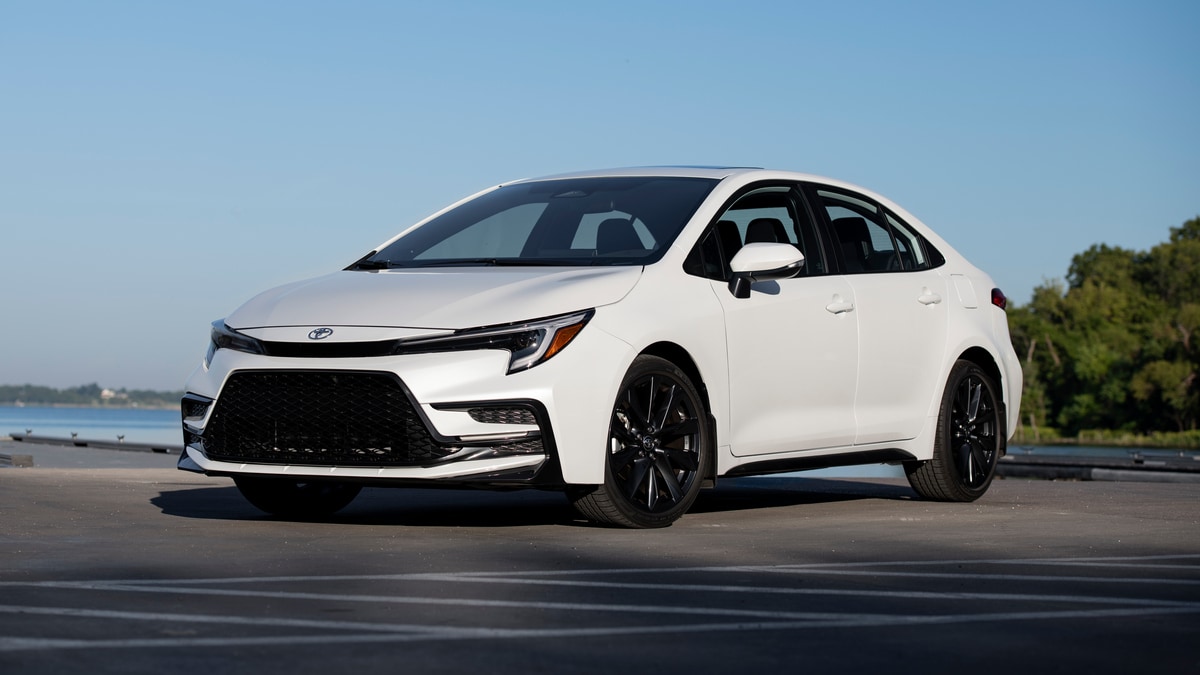Check Engine Light Quick Facts
Seeing a car’s check engine light on can cast a feeling of dread for drivers who equate the symbol with costly repairs. The warning light indicates a malfunction with one of the vehicle’s systems, but even minor problems can trigger an alert.
If your check engine light is flashing, there is a serious issue, and you should turn off the engine as soon as it’s safe to get off the road. After stopping your car, you will want to know why the warning light is on in the first place and how to fix the cause.
Continue reading to learn more about what triggers the check engine light, how to diagnose the warning, and what to do when your check engine light is on.
What Makes a Check Engine Light Come On
Sensors monitor the many complex functions in your engine. The automobile’s system receives information from the sensors to self-diagnose internal problems. For model years 1996 and later, carmakers use the second generation of standardized on-board diagnostics, also known as OBD-II. Older cars use an earlier iteration of the OBD protocol.
If sensors detect information that falls outside a normal range, the system creates an OBD-II code, which activates the check engine light.
- Check engine light solid: When the check engine light turns on and stays on, the issue is typically related to emissions systems or some safety-related faults.
- Check engine light flashing: A blinking or flashing check engine light indicates an issue severe enough to damage critical systems like the catalytic converter or internal engine, fuel, electrical, or air induction systems.
Don’t confuse the check engine light with your car’s maintenance required or service required light. This service notification, shaped like a wrench, alerts you that an oil change or other scheduled maintenance is due.
RELATED: Car Warning and Dashboard Lights Explained
Check Engine Light Warning
Every driver should understand the meaning of warning lights that signal problems with their vehicles. The owner’s manual illustrates where the symbols appear on your gauge panel and help you interpret their meaning. Take this information seriously and pay attention to any warning light that comes on.
Never Ignore Check Engine Light
When the light comes on, take the car to a mechanic and address the problem. If you do your own investigation and determine the code that causes the warning, search a list of OBD-II codes to tell you which specific component has an issue. Read more about diagnostics in a section below.
Not every check engine warning light generates big bills. Sometimes the problem is as simple as tightening the fuel cap. Others can mean more significant issues at hand, especially when accompanied by oil or temperature warning lights. You should immediately stop the vehicle in a safe area and turn off the engine if the oil or temperature lights come on. Oil starvation or high engine temperature conditions can irreparably damage the engine and other components.
Can You Drive Your Car With the Check Engine Light On?
The check engine light warns a driver of a problem with the car’s emissions system or trouble with a critical internal function. Address the issue as soon as possible. If the light comes on and is steady, you can drive until you fix the problem. A flashing check engine light indicates a serious problem, and you should not drive the vehicle.
MORE: Car AC Not Blowing Cold Air: Possible Causes and Solutions
Common Check Engine Light Causes
The check engine light can come on for many reasons. Here are some common problems that diagnostic codes signal. Repair costs range from free or cheap to expensive. Ignoring the issue or delaying the repair might cause greater damage.
- Loose gas cap: Tighten for free or replace for about $25
- Oxygen sensor: Replace for about $350
- Evaporative emissions purge valve: Replace for about $350
- Spark plugs/plug wires: Replace for about $400
- Mass airflow sensor: Replace for about $500
- Thermostat: Replace for about $600
- Fuel injectors: Replace for about $1,200
- Catalytic converter: Replace for about $2,000 or more
Except for tightening a loose gas cap, many drivers lack the skills and tools to fix problems that make a check engine light come on. Identifying the reason for the warning requires a specialized gadget that most people don’t have in their toolboxes.
RELATED: Car Tune-Up: A Checklist for Success
Diagnose Check Engine Light Problems

Your vehicle’s diagnostic codes are accessed using an OBD-II scanner or reader that connects to a 16-prong port usually located beneath the steering column. You have three options to obtain the code that triggered the check engine light.
- Find a car repair shop that will run their scanners to diagnose the issue for a fee, generally less than $100. Shops usually waive diagnostic fees if you have the corrective service done at that location.
- Go to an auto parts store and have the trouble code read at no charge. If the code indicates a minor problem, you might be able to fix it yourself.
- Purchase an OBD-II scanner at your auto parts store or online. Note that OBD-II is sometimes written as OBD2 or OBDII. A good-quality reader for a shade tree mechanic can cost about $50. Also, hundreds of OBD-II apps are available for your smartphone, and the car’s Bluetooth is used to access diagnostic codes. These wireless options are available at every price point, including free. In some cases, you might get what you pay for.
Even if you don’t do the repairs yourself, obtaining codes is beneficial if you want to check against what your mechanic said. It helps ensure that the service center addresses the right issue with your car.
Can I Rent a Check Engine Light Reader?
Most auto parts stores will do a diagnostic scan on your car for free. Alternatively, you can buy an OBD-II scanner for less than $50 from the parts store or an online retailer. A reader can be a handy tool to have in your garage, even if you don’t do much DIY work on your car.
MORE: What to Do if Your Car Overheats
Turn Off Check Engine Light
If your state requires an annual vehicle inspection, you’ll need to take care of the problem behind the warning light beforehand. A car will not pass inspection if the check engine light is steady or flashing.
If a mechanic fixes the cause of the check engine warning on your car, they should reset the diagnostic system to clear any codes. Most OBD scanners on the market will clear and reset codes that make the check engine light come on, even if you haven’t fixed the issue. Ignoring the root cause of an engine warning light when it turns on can create even more problems and significant expenses.
Read Related Car Repair Stories:
Editor’s Note: This article has been updated since its initial publication.




